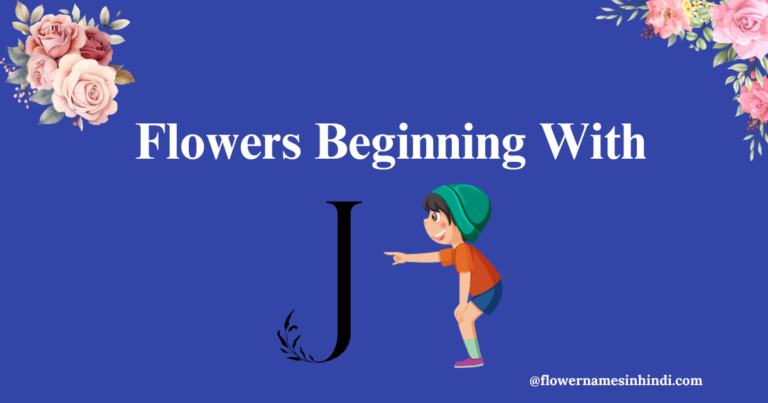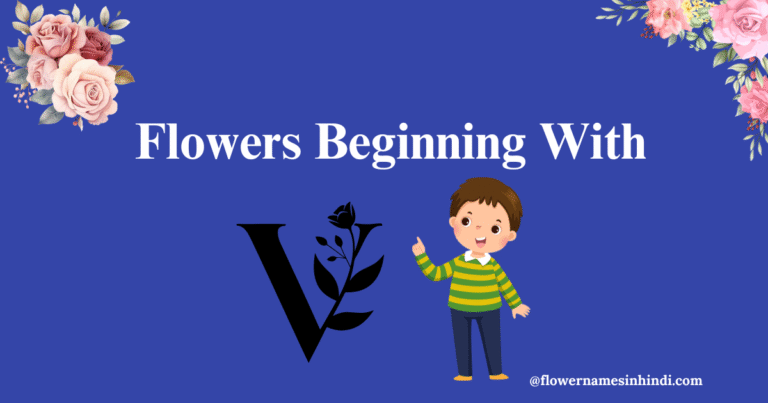🌼 Explore 15+ Unusual Flowers Beginning With U
In our last article, we explored a list of flowers that begin with the letter T. Today, we are moving forward to the flowers beginning with U! Get ready to discover some truly unique and eye-catching flowers that might surprise you.
Imagine walking through a garden filled with rare and unusual blooms, each one adding its own charm and color. Sounds interesting?
Get ready to explore these fascinating flowers, learn fun facts, and discover how they can brighten any space!
Urena
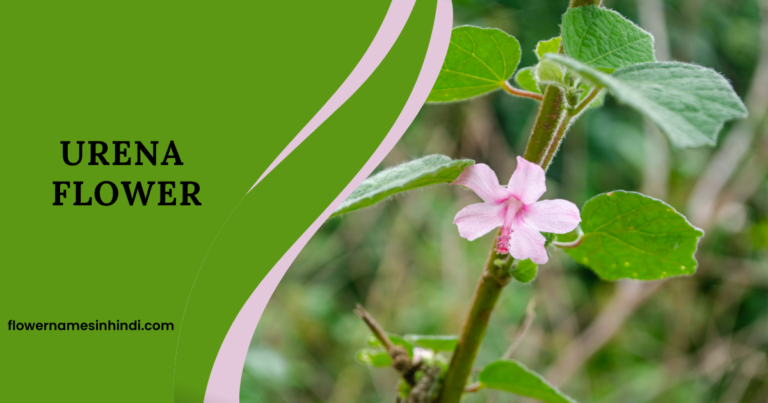
Urena, commonly known as Caesarweed or Congo jute, is a delicate perennial, ascending shrub. It grows up to 0.5 meters (1.6 feet) to 2.5 meters (8.2 feet) tall. Minute, star-like hairs often purple frequently coat the stems, making the plant commonly regarded as a weed
Each plant develops as a single stalk that freely produces bushy stems. The leaf spreads its lobes like fingers on a hand, forming a palmately lobed shape.
The leaves, like the stem, have very little hair. The plant’s flowers are pink-violet and grow to be one centimeter wide.
The fibers from Urena stems have been used to make ropes, sacks, and even fishing nets in some cultures.
| Feature | Detail |
| Botanical name | Urena |
| No. of species | Approximately 5 known species |
| Symbol | Resilience and beauty in simplicity |
| Blooming time | Primarily blooms in warmer seasons |
| Origin/ Native to | Africa, Asia, and parts of the Americas |
Uraria – Flowers Beginning With U

Uraria plants are valued for their fine-textured leaves and tiny, clustered blooms, which provide a delicate touch to landscapes. Prickly Tea or Uraria, is a genus of flowering plants in the bean family called Fabaceae.
hese plants have bright thorny or spiny foliage, with tiny pea flowers which most of the time are in various shades of pink to purple.
Materials from this species are commonly employed in traditional medicine, particularly for a variety of human treatments.
Uraria plants are also nitrogen-fixers! That means they naturally improve soil fertility by converting nitrogen from the air into a form that plants can use.
| Feature | Detail |
| Botanical name | Uraria |
| No. of species | 24 species |
| Symbol | Healing and resilience, often linked to traditional medicine |
| Blooming time | Late summer to early autumn |
| Origin/ Native to | Asia, Africa, and Australia |
Utricularia Vulgaris
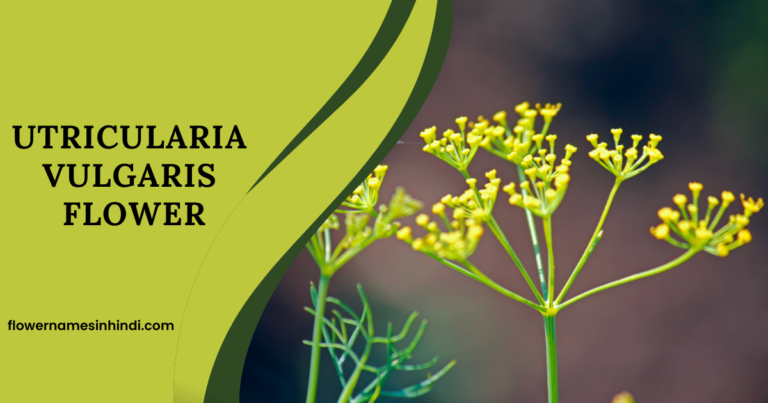
Utricularia vulgaris, generally known as bigger bladderwort or common bladderwort, is an aquatic plant. Stems of this plant can grow to be over a meter long in a single growing season before dying back and forming turions in the winter.
Small, golden blooms appear on delicate stalks above the water’s surface. Its unique bladder-like trap gathers and digests tiny aquatic creatures for nutrition in nutrient-poor areas.
Utricularia vulgaris traps tiny aquatic insects using small bladder-like sacs. These bladders create a vacuum that sucks in prey in milliseconds.
| Feature | Detail |
| Botanical name | Utricularia vulgaris |
| No. of species | Over 230 species in the Utricularia genus |
| Symbol | Adaptability and survival in harsh environments |
| Blooming time | Summer |
| Origin/ Native to | Europe, Asia, and North America |
Urceolina – Flowers Beginning With U
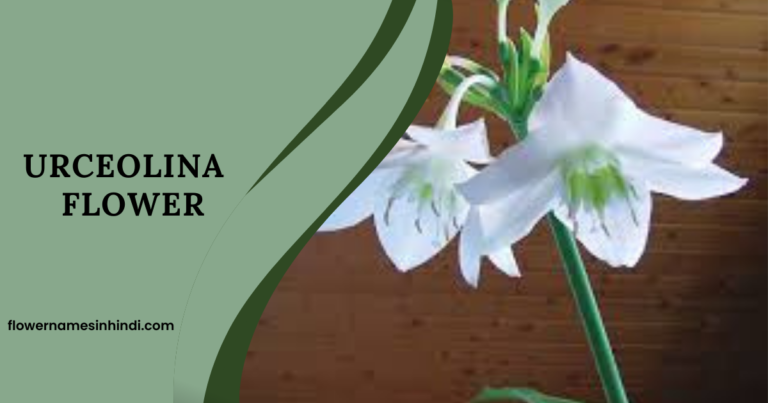
Urceolina, often known as Wild Lily, is a genus of flowering plants included in the amaryllis family. The plants produce magnificent, trumpet-shaped blooms that might be red, orange, or yellow.
The brilliant colours and distinctive forms set the plant apart, letting the flowers stand out in a tropical-themed landscape. These plants prefer well-drained soil and thrive in either full sun or light shade.
Wild Lilies have a wonderful aroma that enriches the sensory experience of being in a garden.
In the past, parts of Urceolina were studied for potential medicinal uses, but its chemical complexity makes it tricky.
Some species contain alkaloids compounds that can be both healing and toxic, depending on the dose
| Feature | Detail |
| Botanical name | Urceolina |
| No. of species | Approximately 6 recognized species |
| Symbol | Elegance, uniqueness, and beauty |
| Blooming time | Typically blooms in spring and summer |
| Origin/ Native to | South America |
Ulex
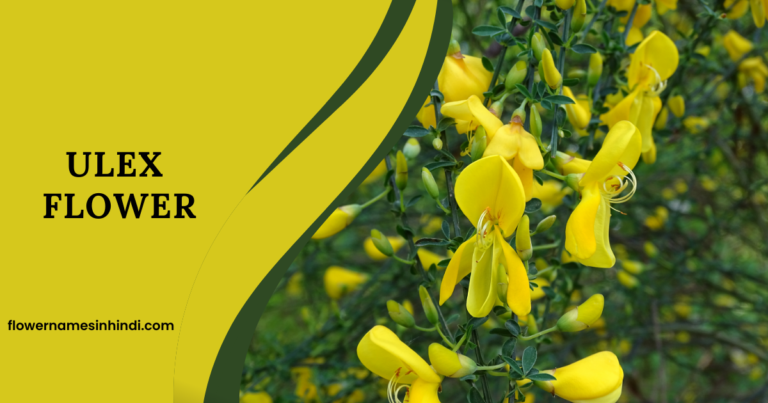
Ulex is a genus of flowering plants in the family Fabaceae. The genus consists of thorny evergreen shrubs bearing bright yellow-coloured flowers of the pea family. It is also known as furze, whin, and gorse.
In addition to their lovely look, the Gorse plant’s blossoms attract a variety of pollinating insects, including bees.
Its resilience makes it a superb plant for surviving in harsh growing circumstances, and the brilliant blossoms provide colour to otherwise dismal settings.
| Feature | Detail |
| Botanical name | Ulex |
| No. of species | 20 recognized species |
| Symbol | Resilience, endurance, and protection |
| Blooming time | Mainly spring, with some species flowering almost year-round |
| Origin/ Native to | Western Europe and Northwest Africa |
Uvularia – Flowers Beginning With U
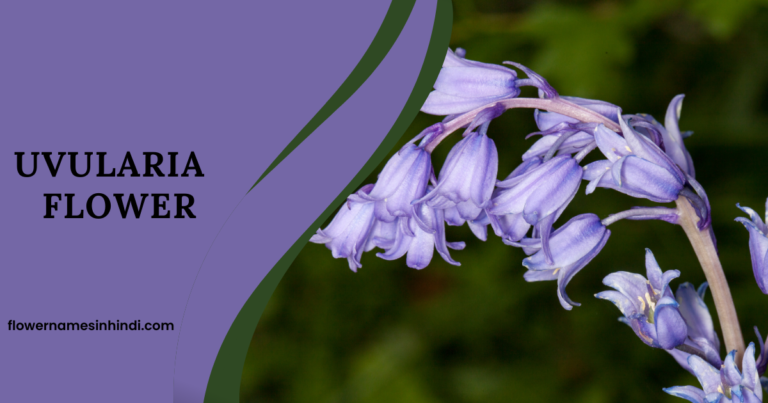
Uvularia is a flowering plant genus belonging to the Colchicaceae family, which is closely related to the Liliaceae. They are also known as bellworts, bellflowers, or merrybells. The genus name comes from the Latin word uvula, which means “little grape,” most likely due to the way the blossoms dangle downward.
It grows well in wooded settings and is known for its beautiful, hanging yellow blooms that emerge in early spring.
The plant’s delicate, bell-shaped blooms and thin, arching branches provide a subtle and elegant touch to shady garden spaces.
Historically, Native American tribes used parts of the Uvularia plant for treating mouth and throat sores, making its name even more fitting!
| Feature | Detail |
| Botanical name | Uvularia |
| No. of species | Approximately 5 recognized species |
| Symbol | Gentleness, delicacy, and spring renewal |
| Blooming time | Early to mid-spring |
| Origin/ Native to | Eastern North America |
Urn Plant
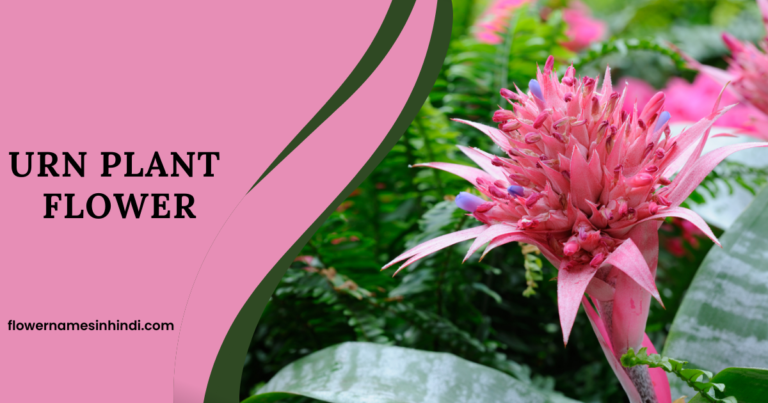
Aechmea fasciata is a kind of flowering plant in the Bromeliaceae family. It is also known as the silver vase or urn plant. This plant is probably the most well-known species in the genus, and it is commonly grown as a houseplant in temperate climates.
The plant grows slowly, reaching a height of 30-90 cm (12-35 in) and spreading up to 60 cm (24 in). It has elliptic-oval-shaped leaves 45-90 cm (18-35 in) long, grouped in a basal rosette arrangement.
Its distinctive vase-like rosette of thick, arching leaves and brilliant pink bracts with blue-purple blooms gives a dramatic flare to interior areas.
| Feature | Detail |
| Botanical name | Aechmea fasciata |
| No. of species | Over 200 species within genus Aechmea |
| Symbol | Adaptability and resilience |
| Blooming time | Late spring to summer |
| Origin/ Native to | Brazil |
Urginea – Flowers Beginning With U
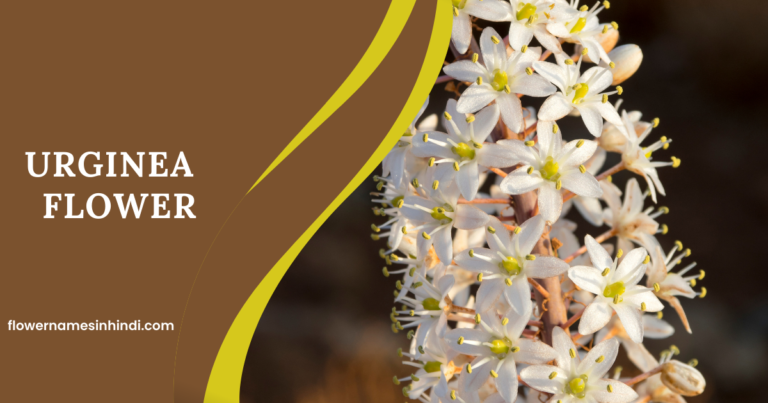
According to the APG IV classification system, Drimia, a genus of flowering plants belongs to the Asparagaceae family. These are mostly deciduous, but can occasionally be evergreen, and grow from bulbs. The bulbs may be found beneath or near the surface.
It develops very long flowering spikes buried in little, reddish-pink flowers that bloom late into the summer. This plant was used in ancient medicinal remedies and is still useful today as a natural rodenticide since the bulbs are poisonous.
While Urginea flowers are stunning, their bulbs are toxic if ingested, containing compounds that can affect the heart and nervous system.
This toxicity, however, doesn’t stop gardeners from using them as ornamental plants. Just keep them away from pets and small children.
| Feature | Detail |
| Botanical name | Urginea |
| No. of species | Around 100 species |
| Symbol | Resilience and adaptability |
| Blooming time | late summer to early autumn |
| Origin/ Native to | Europe, Asia, and Africa |
Ursinia

Ursinia is a genus of the daisy family, Asteraceae. It includes an herbaceous perennial type of grass. Ursinia flowers are recognised for their long-lasting beauty and capacity to attract pollinators such as bees and butterflies. They are often yellow, orange, and white.
Ursinia is prized for its compact growth habit and abundance of blooms, which offer a splash of colour to gardens and landscapes.
Its spreading habit and eye-catching blossoms make it ideal for borders, rock gardens, pots, and ground cover.
| Feature | Detail |
| Botanical name | Ursinia |
| No. of species | 39 species |
| Symbol | Joy and Cheerfulness |
| Blooming time | spring and summer |
| Origin/ Native to | South Africa |
Ulmus – Flowers Beginning With U

Ulmus, or elm, is a genus of deciduous trees of the Ulmaceae family. Elms are valued for their beautiful, arching branches and unique, serrated leaves. These trees are well-known for their decorative appeal, shade, and historical significance.
They have a long history and are culturally significant; the bulk of similarities emphasize their strength and endurance.
Elm has maintained its link with people in a variety of settings due to medical purposes, habitat for wildlife, and habitat improvements, such as air quality.
One mature Ulmus tree can release millions of pollen grains in just a few days, using only the wind.
That’s right, elm flowers throw a silent pollen party, no bees invited. It’s nature’s version of broadcasting signals into the wind
| Feature | Detail |
| Botanical name | Ulmus |
| No. of species | 30-40 species |
| Symbol | strength, wisdom, and endurance |
| Blooming time | Early spring before the leaves fully develop |
| Origin/ Native to | Europe, North America, and Asia |
Uncinia

Uncinia is a genus of flowering plants in the family Cyperaceae, also known as hook-sedges hook grasses or bastard grasses. These ornamental grasses are known for their characteristic, hook-like ends on the leaves and seed heads.
Hook Sedge is commonly found in hues of green, bronze, or red, and has a small, inconspicuous bloom since its major attractiveness is its leaf and plant texture.
| Feature | Detail |
| Botanical name | Uncinia |
| No. of species | About 30 species |
| Symbol | Resilience and adaptability |
| Blooming time | Spring to early summer |
| Origin/ Native to | New Zealand, Australia, South America |
Uvularia Grandiflora
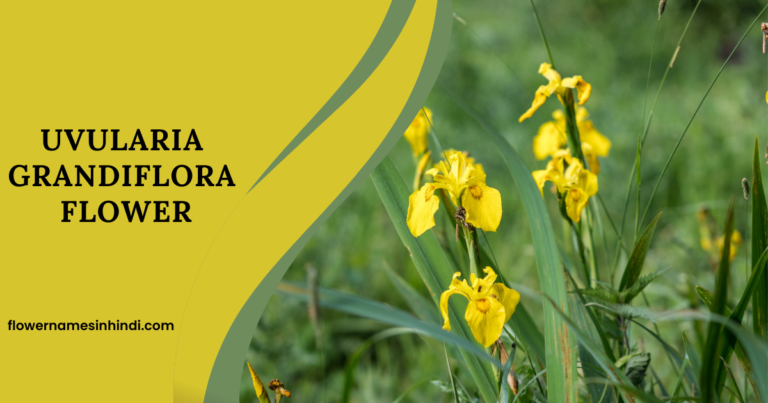
Uvularia grandiflora, the large-flowered bellwort or merrybells, is a species of flowering plant in the family Colchicaceae. This wild plant is loved for its exquisite, nodding yellow blooms and graceful, arching stems, which add a delicate touch to shady garden spaces.
It blooms in early to mid-spring, providing a delicate but attractive splash of color to naturalized settings and forest gardens.
It is a rhizomatous herbaceous perennial that grows to 75 cm (30 in) tall and 30 cm (12 in) wide, with pendant leaves that are hairy on the undersides.
While it welcomes bees, Uvularia has a secret defense against pests: its leaves contain compounds that repel most caterpillars and sap-sucking insects. It’s gentle to look at but not so tasty to those who’d like to nibble on it.
| Feature | Detail |
| Botanical name | Uvularia grandiflora |
| No. of species | Uvularia is a small genus with about 5 species |
| Symbol | Modesty and subtle beauty |
| Blooming time | Early to mid-spring |
| Origin/ Native to | North America |
Uvularia Perfoliata
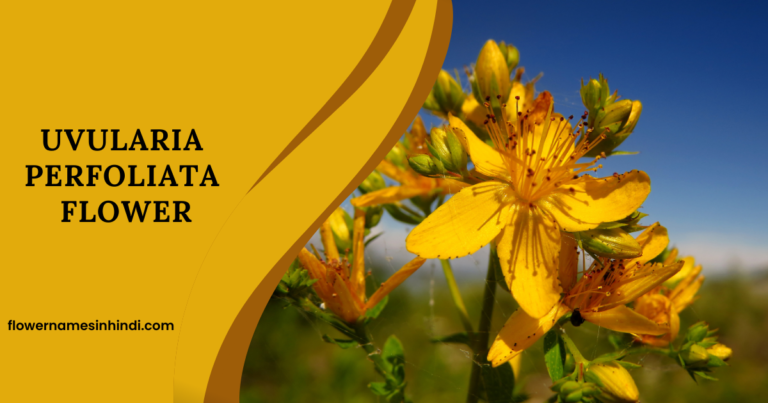
Uvularia Perfoliata, often known as Perfoliate Bellwort, belongs to the Bellwort family. This species is distinguished by its leaves that appear to have a stem running through the centre.
This forest plant is well-known for its modest beauty, which includes thin, arching stems and pale yellow blooms that emerge in the early spring. The term “perfoliata” relates to the distinctive leaf arrangement in which the stem seems to puncture through the leaves.
This Perfoliate Bellwort’s leaves are uniquely arranged, making it beautiful in the garden. This variety adds charm to shady borders and forest gardens, perhaps blossoming early in the year.
| Feature | Detail |
| Botanical name | Uvularia perfoliata |
| No. of species | Uvularia is a genus of about 5 species |
| Symbol | Humility and grace |
| Blooming time | Early spring |
| Origin/ Native to | North America |
Urginea Maritima – Flowers Beginning With U
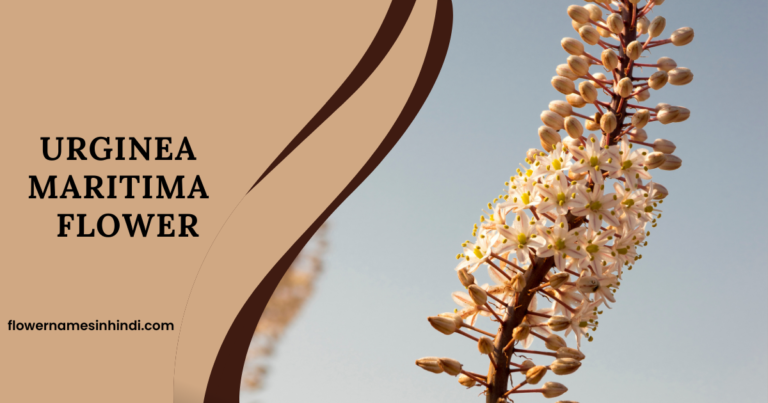
Drimia maritima (also known as Urginea maritima) is a flowering plant that belongs to the Asparagaceae family. This plant has various common names, including squill, sea squill, sea onion, and maritime squill.
Long flowering spikes emerge, adorned with tiny, reddish-pink flowers that bloom late into the summer. It was used in ancient medicinal remedies and is still useful today as a natural rodenticide since the bulbs are poisonous.
In ancient Greece and Rome, Urginea bulbs were used as protective charms. People would place them at the entrances of homes, farms, or temples to ward off evil spirits and signal the arrival of seasonal change. It was like nature’s version of a security system and calendar in one.
| Feature | Detail |
| Botanical name | Urginea maritima |
| No. of species | Urginea is a genus with about 50 species |
| Symbol | Protection and Resilience |
| Blooming time | Late summer to early autumn |
| Origin/ Native to | Europe, North Africa, and parts of the Middle East |
Utricularia
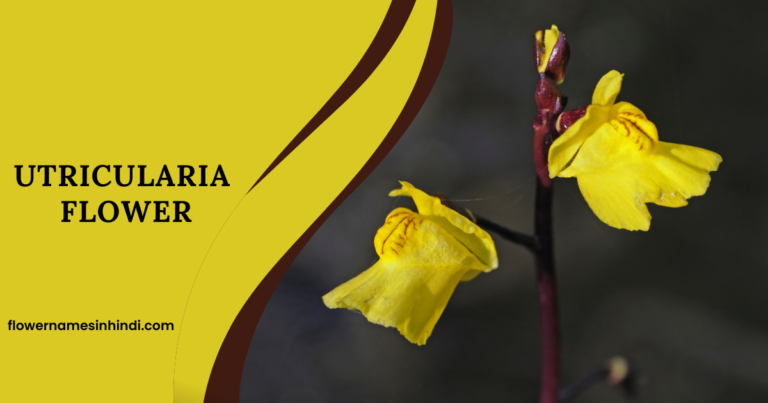
The genus Utricularia is a carnivorous plant that grows on land and in water in practically every corner of the planet. They produce tiny, delicate blooms in yellow, purple, or white, depending on the species.
The unique feature of bladderworts is the catching of small aquatic animals inside bladder-like traps, where they are slowly digested.
Bladderworts, which are highly intriguing plants, may be cultivated in water gardens or swampy places, where they can also help prevent mosquito larvae and other vinery omits.
| Feature | Detail |
| Botanical name | Utricularia |
| No. of species | 233 species |
| Symbol | Adaptation and resourcefulness |
| Blooming time | Summer or early Autumn |
| Origin/ Native to | Found on every continent except Antarctica |
Conclusion of the Flowers Beginning With U
Flowers that start with U offer a wide range of choices for gardeners and flower lovers.These will make your garden a lovely place for both wildlife and the eyes. Learning about these flowers can also deepen your understanding of gardening. If you’re eager for even more options, check out our flowers name in hindi to continue expanding your gardening knowledge and experience.
Related Articles:





